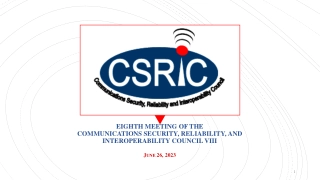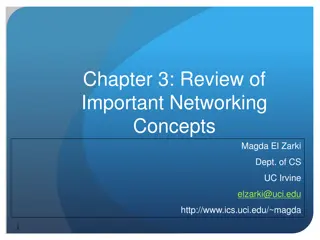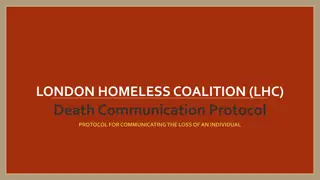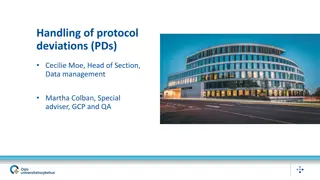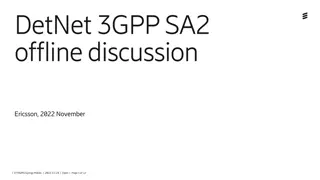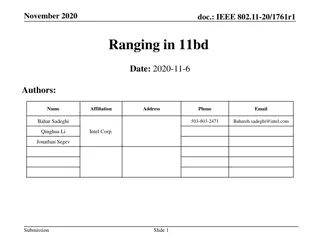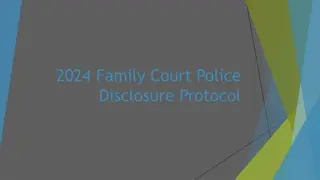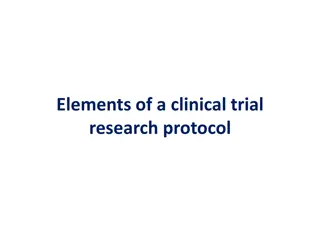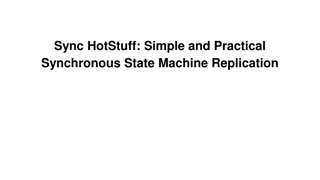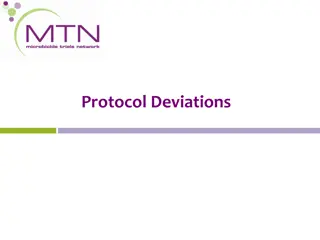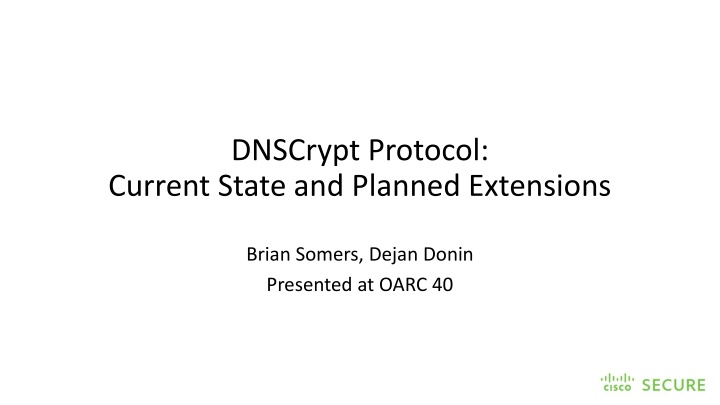
DNSCrypt Protocol and Planned Extensions
Explore the DNSCrypt protocol's background, use cases, comparison with related protocols like DNSSEC, DOT, and DOH, as well as its performance and planned extensions. Learn how DNSCrypt provides cryptographic security for DNS communications while minimizing overhead and protecting against eavesdropping and attacks.
Download Presentation

Please find below an Image/Link to download the presentation.
The content on the website is provided AS IS for your information and personal use only. It may not be sold, licensed, or shared on other websites without obtaining consent from the author. If you encounter any issues during the download, it is possible that the publisher has removed the file from their server.
You are allowed to download the files provided on this website for personal or commercial use, subject to the condition that they are used lawfully. All files are the property of their respective owners.
The content on the website is provided AS IS for your information and personal use only. It may not be sold, licensed, or shared on other websites without obtaining consent from the author.
E N D
Presentation Transcript
DNSCrypt Protocol: Current State and Planned Extensions Brian Somers, Dejan Donin Presented at OARC 40
Agenda DNSCrypt background and use cases RFC for DNSCrypt Comparison with related protocols Version 2 of the protocol DNSCrypt performance Version 3 protocol extensions
DNSCrypt Background In existence since 2013 Considerable attention from the DNS community with several major DNS services providing support This protocol also has several established client and server side open-source implementations in different programming languages While not providing end-to-end DNS security, this protocol is designed to protect the last mile traffic between a client and recursive name server (resolver) against eavesdropping, spoofing or man-in-the-middle attacks Establishes cryptographic security for communication between client and its first level resolver Efficient and adding minimal overhead to the plain text queries
DNSCrypt Use Case Authoritative DNS Server Authoritative DNS Server last mile DNS Client Resolver Authoritative DNS Server
Comparison with related protocols (1) DNS Security Extensions (DNSSEC) [RFC4035] Adds digital signatures to DNS responses Used for data origin authentication and data integrity protection for responses from authoritative servers DNS over TLS (DOT) [RFC7858] Secures last mile communication using Transport Layer Security (TLS) Adds significant overhead due to TCP and TLS handshake Grouping queries in a single session can recoup some of the TLS overhead and result in network overhead gain Suffers from head-of-line blocking associated with TCP transport layer DNS over HTTPS (DOH) [RFC8484] DNS requests and responses are sent over HTTPS protocol DNS traffic is obfuscated by other HTTPS traffic and difficult to monitor Suffers from head-of-line blocking associated with TCP transport layer Easier to implement on the client side than DOT, but harder on the server side as it needs to process HTTPS headers
Comparison with related protocols (2) DNS over QUIC (DOQ) [RFC9250] DNS traffic is mapped onto the separate stream of QUIC protocol transport layer Mapping is lean without using HTTPS as in DNS over HTTP/3 QUIC protocol layer has inherent UDP-based transport security protection QUIC designed to not suffer from head-of-line blocking Employs source address verification in the QUIC handshake to defend against amplification attacks DNS over HTTP/3 (DOH3) DNS requests and responses are sent over HTTP/3 protocol which uses QUIC transport layer DNS traffic is combined with other HTTPS traffic and difficult to monitor Like DOH, easier to implement on the client side than DOQ, but harder on the server side as it needs to process HTTPS headers
DNSCrypt Protocol Interactions: Version 2 DNS Resolver DNS Client Generate Short Term Key Pair Generate Short Term Key Pair Certificate Request Protocol version Provider name Publish certificate with signed short-term public key Response for Certificate Request Signed Certificate DNSCrypt Encapsulated Query Client public key Chosen certificate client magic Client nonce, MAC Verify signature, select a certificate, generate shared key, encrypt query Generate shared key, decrypt query, verify MAC, resolve query, encrypt response DNSCrypt Encapsulated Response Resolver magic nonce Decrypt response, verify MAC
DNSCrypt: Crypto Algorithms (Version 2) Protocol Version Encryption System Name Public Key Length Signature nonce MAC 0x01 X25519-Ed25519-Salsa20-Poly1305 32 64 24 16 0x02 X25519-Ed25519-Chacha20-Poly1305 32 64 24 16
DNSCrypt Performance Our measurements show that DNSCrypt is approximately 4 times slower than plain text queries Can be further improved by caching the derived keys From Cache: Light Blue 1 auth query: Green DNSCrypt: Dark Blue Plain Text: Light Blue
Decrypt (uncurve) Most of the time is spent in crypto_box_beforenm (derive shared key) Encrypt (curve) Most of the time is spent in crypto_box_beforenm (derive shared key)
DNSCrypt Version 3 Extensions (1) Proto col Versi on Encryption System Name Public Key Length Signature nonce MAC 0x03 ECDHE-ECDSA-AES128-GCM-SHA256 (P-256) 33 64 24 16 Encryption system ECDHE-ECDSA-AES128-GCM-SHA256 (P-256) P-256 Elliptic Curve Diffie-Hellman Ephemeral (ECDHE) for key exchange P-256 Elliptic Curve Digital Signature Algorithm (ECDSA) AEAD Advanced Encryption Standard with 128bit key Secure Hash Algorithm 256 (SHA256) [RFC5289] FIPS support Above encryption system is FIPS 140-2 compliant
DNSCrypt Version 3 Extensions (2) UDP Query Padding Version 2 of the protocol had padding mechanism to avoid DNS amplification attacks Response length was always kept equal or shorter than initial client query length In Version 3 of the protocol this padding has been removed as it is deemed counterproductive Tests show that, due to incremental query length increase, query length quickly gets to 1314 (IPv6) or 1294 (IPv4) bytes Certificate Renewal Version 2 is unclear on when to perform certificate renewal It will be stipulated in Version 3 that clients SHOULD renew certificates based on TTL expiry
References [DNSCRYPT-WEBSITE] https://www.dnscrypt.org/ [RFC5289] Rescorla, E., "TLS Elliptic Curve Cipher Suites with SHA-256/384 and AES Galois Counter Mode", RFC 5289, August 2008. [RFC4035] Arends, R., Austein, R., Larson, M., Massey, D., and S. Rose, "Protocol Modifications for the DNS Security , Extensions", RFC 4035, March 2005. [RFC8484] Hoffman, P. and P. McManus, "DNS Queries over HTTPS (DoH)", RFC 8484, DOI 10.17487/RFC8484, October 2018. [RFC7858] Hu, Z., Zhu, L., Heidemann, J., Mankin, A., Wessels, D., and P. Hoffman, "Specification for DNS over Transport Layer Security (TLS)", RFC 7858, DOI 10.17487/RFC7858, May 2016. [RFC9250] C. Huitema, S. Dickinson, A. Mankin DNS over Dedicated QUIC Connections , RFC 79250, 10.17487/RFC9250, May 2022.


